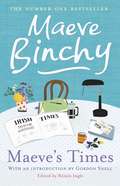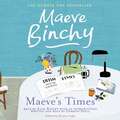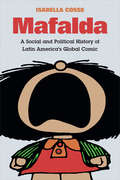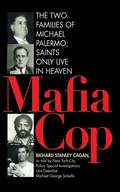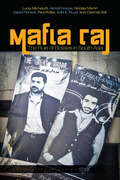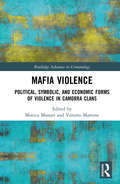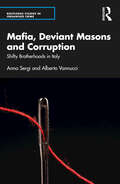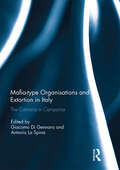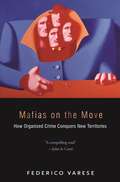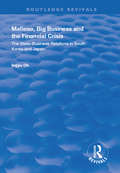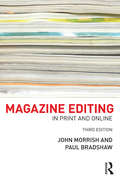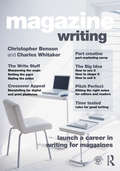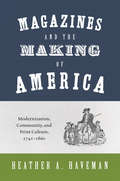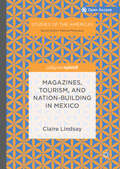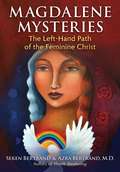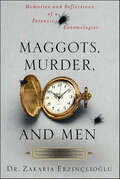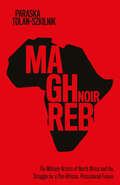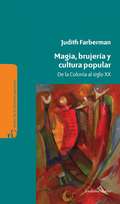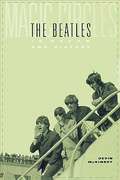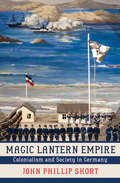- Table View
- List View
Maeve's Times
by Maeve Binchy'Maeve's Times is funny and clever and kind, which are excellent qualities in both books and people' Irish Times'As someone who fell off a chair not long ago trying to hear what they were saying at the next table in a restaurant, I suppose I am obsessively interested in what some might consider the trivia of other people's lives.'Maeve Binchy is well known for her bestselling novels, but for many years Maeve was a journalist. From 'The Student Train' to 'Plane Bores' and 'Bathroom Joggers' to 'When Beckett met Binchy', these articles have all the warmth, wit and humanity of her fiction. Arranged in decades, from the 1960s to the 2000s, and including Maeve's first and last ever piece of writing for the Irish Times, the columns also give a fascinating insight into the author herself.With an introduction written by her husband, the writer Gordon Snell, this collection of timeless writing reminds us of why the leading Irish writer was so universally loved.
Maeve's Times
by Maeve Binchy'Maeve's Times is funny and clever and kind, which are excellent qualities in both books and people' Irish Times'As someone who fell off a chair not long ago trying to hear what they were saying at the next table in a restaurant, I suppose I am obsessively interested in what some might consider the trivia of other people's lives.'Maeve Binchy is well known for her bestselling novels, but for many years Maeve was a journalist. From 'The Student Train' to 'Plane Bores' and 'Bathroom Joggers' to 'When Beckett met Binchy', these articles have all the warmth, wit and humanity of her fiction. Arranged in decades, from the 1960s to the 2000s, and including Maeve's first and last ever piece of writing for the Irish Times, the columns also give a fascinating insight into the author herself.With an introduction written by her husband, the writer Gordon Snell, this collection of timeless writing reminds us of why the leading Irish writer was so universally loved.
Maeve's Times
by Maeve BinchyAs someone who fell off a chair not long ago trying to hear what they were saying at the next table in a restaurant, I suppose I am obsessively interested in what some might consider the trivia of other people's lives.'Maeve Binchy is well-known for her bestselling novels, the most recent of which was A WEEK IN WINTER. But for many years Maeve was a journalist, writing for the IRISH TIMES. From 'The Student Train' to 'Plane Bores' and 'Bathroom Joggers' to 'When Beckett met Binchy', these articles have all the warmth, wit and humanity of her fiction. Arranged in decades, from the 1960s to the 2000s, and including Maeve's first and last ever piece of writing for the IRISH TIMES, the columns also give a fascinating insight into the author herself.With an introduction written by her husband, the writer Gordon Snell, this collection of timeless writing reminds us of why the leading Irish writer was so universally loved.Read by Kate Binchy(p) 2013 Orion Publishing Group
Mafalda: A Social and Political History of Latin America's Global Comic (Latin America in Translation)
by Isabella CosseSince its creation in 1964, readers from all over the world have loved the comic Mafalda, primarily because of the sharp wit and rebellious nature of its title character—a four-year-old girl who is wise beyond her years. Through Mafalda, Argentine cartoonist Joaquín Salvador Lavado explores complex questions about class identity, modernization, and state violence. In Mafalda: A Social and Political History of Latin America's Global Comic—first published in Argentina in 2014 and appearing here in English for the first time—Isabella Cosse analyzes the comic's vast appeal across multiple generations. From Mafalda breaking the fourth wall to speak directly to readers to express her opposition to the 1966 Argentine coup, to Spanish students' protest signs bearing her face, to the comic's cult status in Korea, Cosse provides insights into the cartoon's production, circulation, and incorporation into social and political conversations. Analyzing how Mafalda reflects generational conflicts, gender, modernization, the Cold War, authoritarianism, neoliberalism, and much more, Cosse demonstrates the unexpected power of humor to shape revolution and resistance.
Mafia Cop: The Two Families of Michael Palermo; Saints Only Live in Heaven
by Richard CaganDetective Michael Palermo built his career on his unique ability to inhabit two worlds at once: the world of law enforcement and the underworld of New York’s crime family organizations. Palermo participated in over two thousand arrests while maintaining close relationships with the kingpins of organized crime—ties that allowed him to stay one step ahead of the rest of the New York City Police Department. This true crime drama takes you inside the police force at its most corrupt and into the dark and dirty world of dons, consiglieres, underbosses, button men, soldiers, and cowboys.
Mafia Marriage: My Story
by Beverly Donofrio Rosalie BonannoA Look Inside the Godfather's Own House. Rosalie Profaci was a Mafia princess. Salvatore Bill Bonanno, oldest son of Mafia Don Joe Bonanno, the real-life model for The Godfather, was organized crime's crown prince.
Mafia Raj: The Rule of Bosses in South Asia (South Asia in Motion)
by Lucia Michelutti Ashraf Hoque Nicolas Martin David Picherit Paul Rollier Arild E. Ruud Clarinda Still"Mafia" has become an indigenous South Asian term. Like Italian mobsters, the South Asian "gangster politicians" are known for inflicting brutal violence while simultaneously upholding vigilante justice—inspiring fear and fantasy. But the term also refers to the diffuse spheres of crime, business, and politics operating within a shadow world that is popularly referred to as the rule of the mafia, or "Mafia Raj." Through intimate stories of the lives of powerful and aspiring bosses in India, Pakistan, and Bangladesh, this book illustrates their personal struggles for sovereignty as they climb the ladder of success. Ethnographically tracing the particularities of the South Asian case, the authors theorize what they call "the art of bossing," providing nuanced ideas about crime, corruption, and the lure of the strongman across the world.
Mafia Violence: Political, Symbolic, and Economic Forms of Violence in Camorra Clans (Routledge Advances in Criminology)
by Monica Massari Vittorio MartoneUsing in-depth field research and analysis of case studies, Mafia Violence: Political, Symbolic, and Economic Forms of Violence in Camorra Clans focuses attention on the phenomenon of violence performed by Italian organised crime groups, devoting specific attention to the Camorra, which has been responsible since the mid-1980s for almost half of all mafia homicides documented in Italy. The Camorra has acquired increased visibility at an international level due to its intense use of violence and high level of dangerousness, but until now, the study of the different forms of violence implemented by mafias has not received systematic attention at the scientific level. Hence, this book fills this gap by providing a both theoretical and empirical contribution toward the analysis of one of the most unknown – although highly visible and dangerous – dimension of mafias’ action. This collection of work by distinguished scholars provides a unique overview of the multifaceted characteristics of violence currently performed by mafia groups in Italy by focusing on specific actors – i.e., Camorra clans – but also other traditional mafia organisations such as Cosa Nostra and ’Ndrangheta; specific contexts – i.e., different territories and different markets, both legal and illegal; and specific practices and performances. Part I takes a diachronic and comparative perspective to provide an overview of mafias’ violence during the past 30 years, focusing on the three most prominent criminal organisations active in Italy: Camorra, Cosa Nostra, and ’Ndrangheta. Based on the outcomes of a major project carried out by a research group at the University of Naples Federico II from 2015 to 2017, Part II looks at the use of violence by Camorra clans, incorporating information from case studies, judicial files, law enforcement investigations, wiretappings, interviews with privileged observers, firsthand empirical data, and historical documents and social sciences literature. Using a multi-disciplinary approach drawing from criminology, sociology, history, anthropology, economics, political science, and geography, this book is essential reading for international researchers and practitioners interested in piecing together the full picture of modern organised crime.
Mafia and Outlaw Stories from Italian Life and Literature
by Robin Pickering-IazziThe first of its kind in English, Mafia and Outlaw Stories from Italian Life and Literature is a selection of readings from Italian fiction and non-fiction writers on the subject of the Mafia. Among the renowned writers featured are Giovanni Verga, Grazia Deledda, Anna Maria Ortese, Livia De Stefani, and Silvana La Spina, as well as famous witnesses such as Felicia Impastato, Letizia Battaglia, and Rita Atria who provide personal, often terrifying testimonies about their experiences with the Mafia. It is a historically diverse examination of criminal and outlaw institutions by some of the most significant figures in Italian literature.These newly translated writings show the ways in which Italians perceived and wrote about the Mafia and crime from the 1880s to the 1990s. Among them are stories dealing with the important legends used by the Mafia as sources for their image and ideology, legends such as the brigand and the Blessed Paulists. Some of the fascinating themes discussed are connections between the Mafia, the State, and the Catholic Church; the Mafia and children; women and the Mafia; the Black Hand; and relations between the Mafia and the Allied Forces during the Second World War. Robin Pickering-Iazzi incorporates an invaluable introduction that charts key periods in the history of Italy and the Mafia, and profiles each of the authors in the collection, noting their major works in Italian as well as those available in English. These and other features make this text especially appropriate for courses in Italian studies.Mafia and Outlaw Stories from Italian Life and Literature takes a unique and intriguing approach to the subject of the Mafia, and offers informed judgements about its historical impact on Italian society and culture.
Mafia, Deviant Masons and Corruption: Shifty Brotherhoods in Italy (Routledge Studies in Organised Crime)
by Anna Sergi Alberto VannucciThis book is the first to consider the intersection between mafia power and deviant masonic lodges within the political sphere of the contemporary Italian state. At its core, it offers an analysis of the shifting interactions across powerful actors and the ways in which they balance reciprocal obedience, and a unique insight into the political processes where mafia actors and deviant lodges play a significant role in the allocation of resources. Mafia, Deviant Masons and Corruption draws on a wealth of literature from across criminology and political science and a range of primary data sources including judicial files, indictments, arrest warrants, intercepted materials and sentences for key cases, official documentation from Parliamentary commissions and special committees of inquiry, rituals of affiliation and codes of initiation, and interviews with prosecutors, journalists and experts. In doing so it redefines how we have come to understand the relationship between mafias and power in Italy. It considers how criminal groups are defined and enriched by a relational capital in shifty environments where every actor assumes often a double nature: the mafia boss acts as an entrepreneur; the entrepreneur acts as a politician; the politician mixes with masons; a deviant mason supports mafia organisations. This book is a major contribution to the literature on mafias and organised crime across criminology, sociology and political science, and will be of great interest to students, researchers, scholars, and engaged general readers.
Mafia-type Organisations and Extortion in Italy: The Camorra in Campania
by Giacomo Di Gennaro Antonio La SpinaMafia-type organizations generate several distorting effects on the economy. In Italy their presence is endemic, and not only in Southern regions such as Sicily, Campania or Calabria. Such organizations endure the fierce and continuous pressure exerted by Italian anti-mafia policy, maybe the most articulate and effective such policy in the world. Nevertheless, they have survived by submerging, transforming, and relocating their operations. The analysis of the different Mafias of today benefits from a huge amount of empirical data produced by investigators. This allows us to outline more reliable indexes of the penetration of Mafiosi in given territories, as well as to estimate the size of their activities in a transparent and empirically testable way. The contributions gathered in this book stem from the application of an innovative methodology originally introduced by the Fondazione Rocco Chinnici, and they enlarge our understanding of such a complex and dynamic phenomenon. After the presentation of the approach, the chapters are devoted to the Camorra's present situation, to an estimate of the size of extortion, to a comparison between Cosa Nostra and Camorra, to the analysis of wiretapped conversations and, finally, to the delocalization of Mafias and the perspectives of a European anti-mafia policy. This book was originally published as a special issue of Global Crime.
Mafias on the Move: How Organized Crime Conquers New Territories
by Federico Varese"A compelling read and an impeccable work of reference."—John le CarréOrganized crime is spreading like a global virus as mobs take advantage of open borders to establish local franchises at will. That at least is the fear, inspired by stories of Russian mobsters in New York, Chinese triads in London, and Italian mafias throughout the West.As Federico Varese explains in this compelling and daring book, the truth is more complicated. Varese has spent years researching mafia groups in Italy, Russia, the United States, and China, and argues that mafiosi often find themselves abroad against their will, rather than through a strategic plan to colonize new territories. Once there, they do not always succeed in establishing themselves. Varese spells out the conditions that lead to their long-term success, namely sudden market expansion that is neither exploited by local rivals nor blocked by authorities. Ultimately the inability of the state to govern economic transformations gives mafias their opportunity.In a series of matched comparisons, Varese charts the attempts of the Calabrese 'Ndrangheta to move to the north of Italy, and shows how the Sicilian mafia expanded to early twentieth-century New York, but failed around the same time to find a niche in Argentina. He explains why the Russian mafia failed to penetrate Rome but succeeded in Hungary. In a pioneering chapter on China, he examines the challenges that triads from Taiwan and Hong Kong find in branching out to the mainland. Based on ground-breaking field work and filled with dramatic stories, this book is both a compelling read and a sober assessment of the risks posed by globalization and immigration for the spread of mafias.
Mafioso, Big Business and the Financial Crisis: The State-business Relations in South Korea and Japan (Routledge Revivals)
by Ingyu OhFirst published in 1999, this book explores the question of is the business organisation a result of efficiency or is it a result of a state-business organisation a result of a state-business interaction? This question being in the context of the Korean chaebol system and the Japanese Keiretsu system; this book explores the political and economic growth and then the following down fall of these systems occurred without rupturing either country’s state policy regarding the chaebol or the keiretsu.
Magazine Editing: In Print and Online
by Paul Bradshaw John MorrishIncluding comprehensive coverage on both print and online, consumer and free magazines, Magazine Editing looks at how magazines work and explains the dual role of the magazine editor. John Morrish and Paul Bradshaw consider the editor both as a journalist, having to provide information and entertainment for readers, and as a manager, expected to lead and supervise successfully the development of a magazine or periodical. Looking at the current state of the magazine market in the twenty-first century, the third edition explains how this has developed and changed in recent years, with specific attention paid to the explosion of apps, e-zines, online communities and magazine websites. Featuring case studies, interviews with successful editors, examples of covers and spreads, and useful tables and graphs, this book discusses the editor’s many roles and details the skills needed to run a publication. Magazine Editing offers practical guidance on: how to create an editorial strategy how to lead and manage an editorial team researching a market and finding new readers dealing with budgets and finance working with designers and production staff legal, technological and ethical dilemmas online distribution, social media and search engine optimisation managing information overload how to become an editor.
Magazine Law: A Practical Guide
by Peter Mason Derrick SmithMagazine Law is a comprehensive guide to the law for magazine journalists, editors and managers. Written by a barrister experienced in publishing and copyright law and a former magazine journalist and law lecturer, the book addresses the special needs of the magazine industry and explains the laws that regulate and seek to determine what journalists can and cannot publish, and how these laws are applied in everyday situations.Written specifically for all those in the magazine industry, as well as students of magazine journalism, the authors address issues which directly affect day to day practice. The legal and regulatory framework is illustrated with case studies and up-to-date examples of precedent setting cases.Topics covered include:* the legal process and the distinction between criminal and civil law* the role of the courts and reporting court procedure* defamation, fair-comment and libel* product testing and criticism* copyright and passing off* law for photographers, picture researchers and the use of illustrations* privacy and trespass* competition, lotteries and magazine promotion* sub-editing errors and inaccurate copy* ethical and professional issues facing journalistsCodes of Practice published by the Press Complaints Commission and National Union of Journalists are set out in appendices, as are requirements for the award of a National Vocational Qualification in Periodical Journalism in Press Law and Ethics. A glossary of legal terms is included.
Magazine Production (Media Skills)
by Jason WhittakerMagazine Production presents a guide to the practical processes of taking a magazine from initial idea to final product. This second edition provides important revisions on these production processes by examining the technological and business advancements which have reshaped the magazine industry in the last decade. Brand new chapters document the rise of digital media and identify its impact on magazine creation. They also include new guidance on designing online, tablet and mobile editions, as well as for print. Magazine Production explains the business of magazines in the UK, Europe and North America, and the roles of marketing, publishing and advertising in establishing a successful title. This edition also addresses the move by publishers towards e-commerce, multimedia content and events to promote their brands and sell products. With information on professional bodies such as the Professional Publishers Association, an expert overview of magazine markets and a breakdown of roles within editorial and design departments, this book offers readers practical steps to achieving success in magazine publishing today. Magazine Production includes: • an introduction to the history, markets and audiences of magazines • explanations of the roles of publishers and advertising teams as part of the business of magazines • a comparison between print and new systems of digital circulation, with particular focus on mobile platforms; • guidance on setting up editorial teams, and best practice for producing feature, news and review copy • information on designing and laying out a title for print or digital distribution • legal and ethical issues affecting magazine editors and publishers • a consideration of the future of magazines.
Magazine Writing
by Christopher D. Benson Charles F. WhitakerWhat does it take to launch a career writing for magazines? In this comprehensive, up-to-date introduction to magazine writing, students will learn everything from the initial story pitch all the way through to the final production, taking with them the essential tools and skills they will need for today's rapidly changing media landscape. Written by a team of experienced writers and editors, Magazine Writing teaches the time-tested rules for good writing alongside the modern tools for digital storytelling. From service pieces to profiles, entertainment stories and travel articles, it provides expert guidance on topics such as: developing saleable ideas; appealing to specific segments of the market; navigating a successful pitch; writing and editing content for a variety of areas, including service, profiles, entertainment, travel, human interest and enterprise Chock full of examples of published works, conversations with successful magazine contributors and bloggers, and interviews with working editors, Magazine Writing gives students all the practical and necessary insights they need to jumpstart a successful magazine writing career.
Magazines and the Making of America: Modernization, Community, and Print Culture, 1741-1860
by Heather A. HavemanFrom the colonial era to the onset of the Civil War, Magazines and the Making of America looks at how magazines and the individuals, organizations, and circumstances they connected ushered America into the modern age. How did a magazine industry emerge in the United States, where there were once only amateur authors, clumsy technologies for production and distribution, and sparse reader demand? What legitimated magazines as they competed with other media, such as newspapers, books, and letters? And what role did magazines play in the integration or division of American society? From their first appearance in 1741, magazines brought together like-minded people, wherever they were located and whatever interests they shared. As America became socially differentiated, magazines engaged and empowered diverse communities of faith, purpose, and practice. Religious groups could distinguish themselves from others and demarcate their identities. Social-reform movements could energize activists across the country to push for change. People in specialized occupations could meet and learn from one another to improve their practices. Magazines built translocal communities--collections of people with common interests who were geographically dispersed and could not easily meet face-to-face. By supporting communities that crossed various axes of social structure, magazines also fostered pluralistic integration.Looking at the important role that magazines had in mediating and sustaining critical debates and diverse groups of people, Magazines and the Making of America considers how these print publications helped construct a distinctly American society.
Magazines, Tourism, and Nation-Building in Mexico (Studies of the Americas)
by Claire LindsayThis open access book discusses the relationship between periodicals, tourism, and nation-building in Mexico. It enquires into how magazines, a staple form of the promotional apparatus of tourism since its inception, articulated an imaginative geography of Mexico at a time when that industry became a critical means of economic recovery and political stability after the Revolution. Notwithstanding their vogue, popularity, reach, and close affiliations to commerce and state over several decades, magazines have not received any sustained critical attention in the scholarship on that period. This book aims to redress that oversight. It argues that illustrated magazines like Mexican Folkways (1925–1937) and Mexico This Month (1955–1971) offer rich and compelling materials in that regard, not only as unique tools for interrogating the ramifications of tourism on the country’s reconstruction, but as autonomous objects of study that form a vital if complex part of Mexico’s visual culture.
Magdalene Mysteries: The Left-Hand Path of the Feminine Christ
by Azra Bertrand Seren BertrandDiscover the Womb Rites and initiatory magic of Mary Magdalene, who was revered as a Priestess and human embodiment of the Goddess • Reveals how Mary Magdalene was a sacred priestess of the ancient Womb Mysteries, connected to moon wisdom, sacred harlot archetypes, and goddesses in many traditions, including Sophia, Isis, Inanna, Asherah, Lilith, Jezebel, and Witches • Explains how the Magdalene Mysteries have been encoded in Gnostic texts, sacred art, and literature and unveils the secret Grail heresy of the Ghent Altarpiece • Offers rituals and practices to initiate you into the Womb magic of the ancient priestesses and access deeper dimensions of sexuality and feminine power A sacred priestess of the ancient Womb Rites, Mary Magdalene was at the center of a great and enduring Mystery tradition, one that touched on a stream of perennial spiritual wisdom as old as humanity. Worshipped as the human embodiment of the Goddess, the earthly Sophia, her womb was the spiritual luminatrix that anointed and empowered Jesus, transforming him into the Christ. As a priestess of the Goddess, Mary Magdalene knew how to embody the light and the dark, how to harness the magic potency of sacred sexual energy, and how to cleanse, awaken, and resurrect the soul. Yet, even though she sparked the creation of a worldwide religion, her story and teachings have been forgotten. Unveiling the lost left-hand path of the Magdalene, the Feminine Christ, authors Seren and Azra Bertrand explore how this underground stream of knowledge has been carried forward over the millennia through an unbroken lineage of Womb Shamans, Priestesses, Oracles, and Medicine Women. They explain how the Magdalene Mysteries, symbolized by the Rose, have been encoded in Gnostic codices and gospels and in the highest art, literature, and architecture of many ages, including most significantly the Ghent Altarpiece. They examine Mary Magdalene&’s connection to moon wisdom, sacred harlot archetypes, and goddesses in many traditions, including Isis, Inanna, Asherah, Lilith, and Jezebel, and look at shamanic, tantric, and Cathar expressions of sacred feminine mysteries as well as the Witch and Templar roots of Robin Hood and Maid Marian. In this revelatory and magical text on the lost feminine mystery traditions of Mary Magdalene and the lineage of Sophia, the authors present encompassing theological, historical, mythological, and archetypal wisdom, with rituals and practices to initiate you into the Womb magic of the ancient priestesses and the path of the wild feminine.
Maggots, Murder, and Men: Memories and Reflections of a Forensic Entomologist
by Zakaria ErzinçliogluThe science of forensic entomology-the application of insect biology to the investigation of crime-is extremely specialized, combining as it does an expert knowledge of entomology with keen powers of observation and deduction. Dr. Erzinclioglu has been a practitioner for over twenty-five years and has been involved in a great number of investigations, including some recent high-profile cases, where his evidence has been critical to the outcome.A great admirerer of Sherlock Holmes, Dr. Erzinclioglu compares his own techniques with those of his fictional hero, and takes the reader behind the often gruesome but deeply fascinating scenes of a murder investigation. This absorbing book ranges over cases from history, prehistory and mythology to the present day and is as gripping and readable as a good thriller.
Maghreb Noir: The Militant-Artists of North Africa and the Struggle for a Pan-African, Postcolonial Future (Worlding the Middle East)
by Paraska Tolan-SzkilnikUpon their independence, Moroccan, Algerian, and Tunisian governments turned to the Global South and offered military and financial aid to Black liberation struggles. Tangier and Algiers attracted Black American and Caribbean artists eager to escape American white supremacy; Tunis hosted African filmmakers for the Journées Cinématographiques de Carthage; and young freedom fighters from across the African continent established military training camps in Morocco. North Africa became a haven for militant-artists, and the region reshaped postcolonial cultural discourse through the 1960s and 1970s. Maghreb Noir dives into the personal and political lives of these militant-artists, who collectively challenged the neo-colonialist structures and the authoritarianism of African states. Drawing on Arabic, Spanish, Portuguese, French, and English sources, as well as interviews with the artists themselves, Paraska Tolan-Szkilnik expands our understanding of Pan-Africanism geographically, linguistically, and temporally. This network of militant-artists departed from the racial solidarity extolled by many of their nationalist forefathers, instead following in the footsteps of their intellectual mentor, Frantz Fanon. They argued for the creation of a new ideology of continued revolution—one that was transnational, trans-racial, and in defiance of the emerging nation-states. Maghreb Noir establishes the importance of North Africa in nurturing these global connections—and uncovers a lost history of grassroots collaboration among militant-artists from across the globe.
Magia, brujería y cultura popular: De la colonia al siglo 20
by Judith FarbermanDe la colección «Nudos de la historia argentina» dirigida por JorgeGelman, una investigación sobre magia y hechicería desde tiempos de laconquista. Sin duda, ciertas creencias y prácticas mágicas han atravesado lossiglos intactas o con muy pocas variaciones. Hoy como ayer, numerosaspersonas creen en la eficacia de la magia, sea para producir elinfortunio como para protegerse de él. Lo que, en cambio, sí ha variadohistóricamente es el lugar que estas creencias y prácticas ocupan en lasdiferentes visiones del mundo y las formas en que se las ha pensado yexplicado.Este libro se ocupa de la persecución de la hechicería durante laColonia y también de los modos en que las prácticas mágicas, entendidascomo supersticiones, fueron juzgadas y conceptualizadas en el siglo XX.Santiago del Estero constituye el corazón geográfico de unainvestigación que, tras rastrear a los «hechiceros» en expedientesjudiciales del siglo XVIII, se ocupa de las supersticiones y de lossupersticiosos en la cultura popular, a través del análisis de laEncuesta Nacional de Folclore de 1920 y del pensamiento de tres ilustresautores santiagueños: Ricardo Rojas, Orestes Di Lullo y Bernardo CanalFeijoo.Para la colección «Nudos de la Historia argentina» hemos pedido ahistoriadores de primer nivel que escriban libros sólidos pero a la vezatractivos, susceptibles de ser leídos y disfrutados por personasinteresadas en la historia, aunque carezcan de una formaciónuniversitaria en la disciplina. Esperamos estar a la altura del desafío.
Magic Circles: The Beatles in Dream and History
by Devin McKinneyNo one expressed the heart and soul of the Sixties as powerfully as the Beatles did through the words, images, and rhythms of their music. In Magic Circles Devin McKinney uncovers the secret history of a generation and a pivotal moment in twentieth-century culture. He reveals how the Beatles enacted the dream life of their time and shows how they embodied a kaleidoscope of desire and anguish for all who listened--hippies or reactionaries, teenage fans or harried parents, Bob Dylan or Charles Manson. The reader who dares to re-enter the vortex that was the Sixties will appreciate, perhaps for the first time, much of what lay beneath the social trauma of the day. <P><P>Delving into concerts and interviews, films and music, outtakes and bootlegs, Devin McKinney brings to bear the insights of history, aesthetics, sociology, psychology, and mythology to account for the depth and resonance of the Beatles' impact. His book is also a uniquely multifaceted appreciation of the group's artistic achievement, exploring their music as both timeless expression and visceral response to their historical moment. Starting in the cellars of Liverpool and Hamburg, and continuing through the triumph of Beatlemania, the groundbreaking studio albums, and the last brutal, sorrowful thrust of the White Album, Magic Circles captures both the dream and the reality of four extraordinary musicians and their substance as artists. At once an entrancing narrative and an analytical montage, the book follows the drama, comedy, mystery, irony, and curious off-ramps of investigation and inquiry that contributed to one of the most amazing odysseys in pop culture.
Magic Lantern Empire: Colonialism and Society in Germany
by John Phillip ShortMagic Lantern Empire examines German colonialism as a mass cultural and political phenomenon unfolding at the center of a nascent, conflicted German modernity. John Phillip Short draws together strands of propaganda and visual culture, science and fantasy to show how colonialism developed as a contested form of knowledge that both reproduced and blurred class difference in Germany, initiating the masses into a modern market worldview. A nuanced account of how ordinary Germans understood and articulated the idea of empire, this book draws on a diverse range of sources: police files, spy reports, pulp novels, popular science writing, daily newspapers, and both official and private archives.In Short's historical narrative-peopled by fantasists and fabulists, by impresarios and amateur photographers, by ex-soldiers and rank-and-file socialists, by the luckless and bored along the margins of German society-colonialism emerges in metropolitan Germany through a dialectic of science and enchantment within the context of sharp class conflict. He begins with the organized colonial movement, with its expert scientific and associational structures and emphatic exclusion of the "masses." He then turns to the grassroots colonialism that thrived among the lower classes, who experienced empire through dime novels, wax museums, and panoramas. Finally, he examines the ambivalent posture of Germany's socialists, who mounted a trenchant critique of colonialism, while in their reading rooms workers spun imperial fantasies. It was from these conflicts, Short argues, that there first emerged in the early twentieth century a modern German sense of the global.
